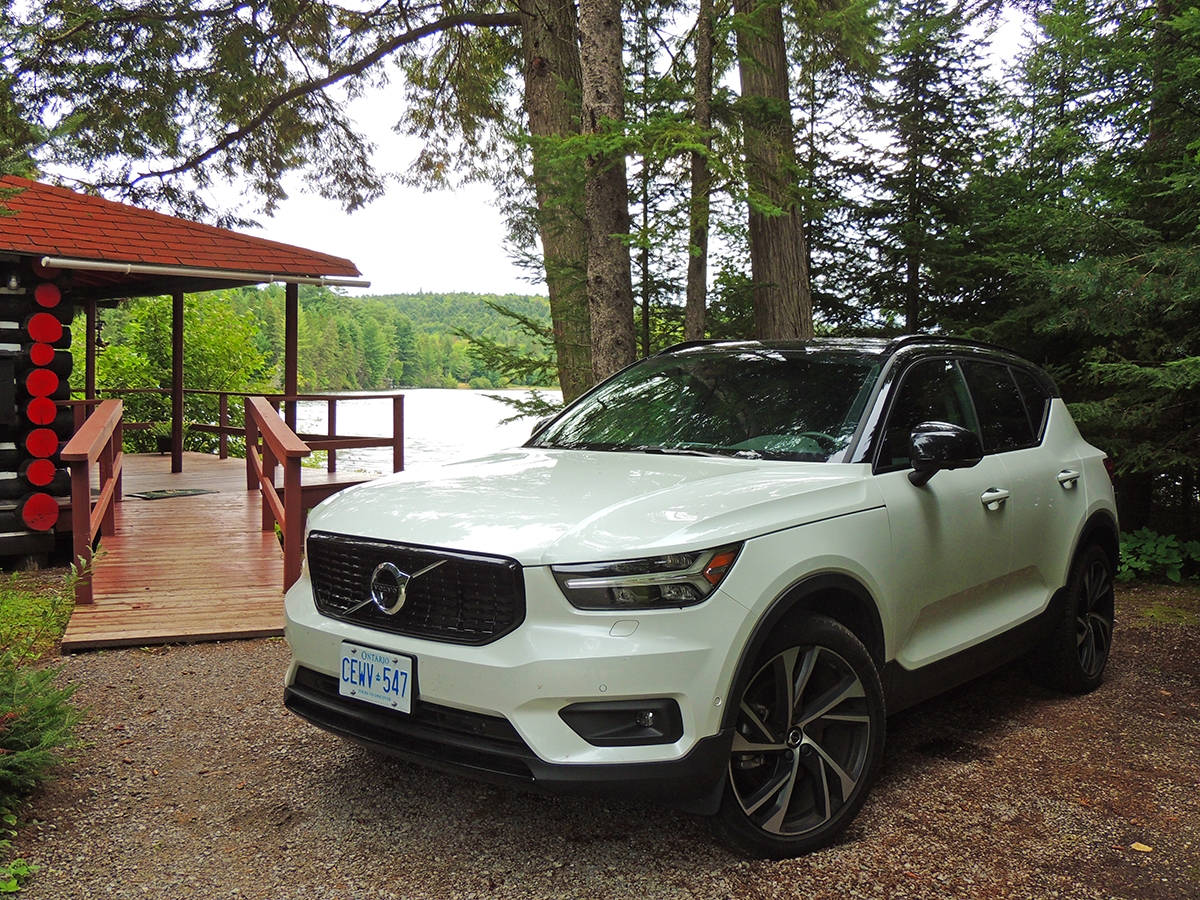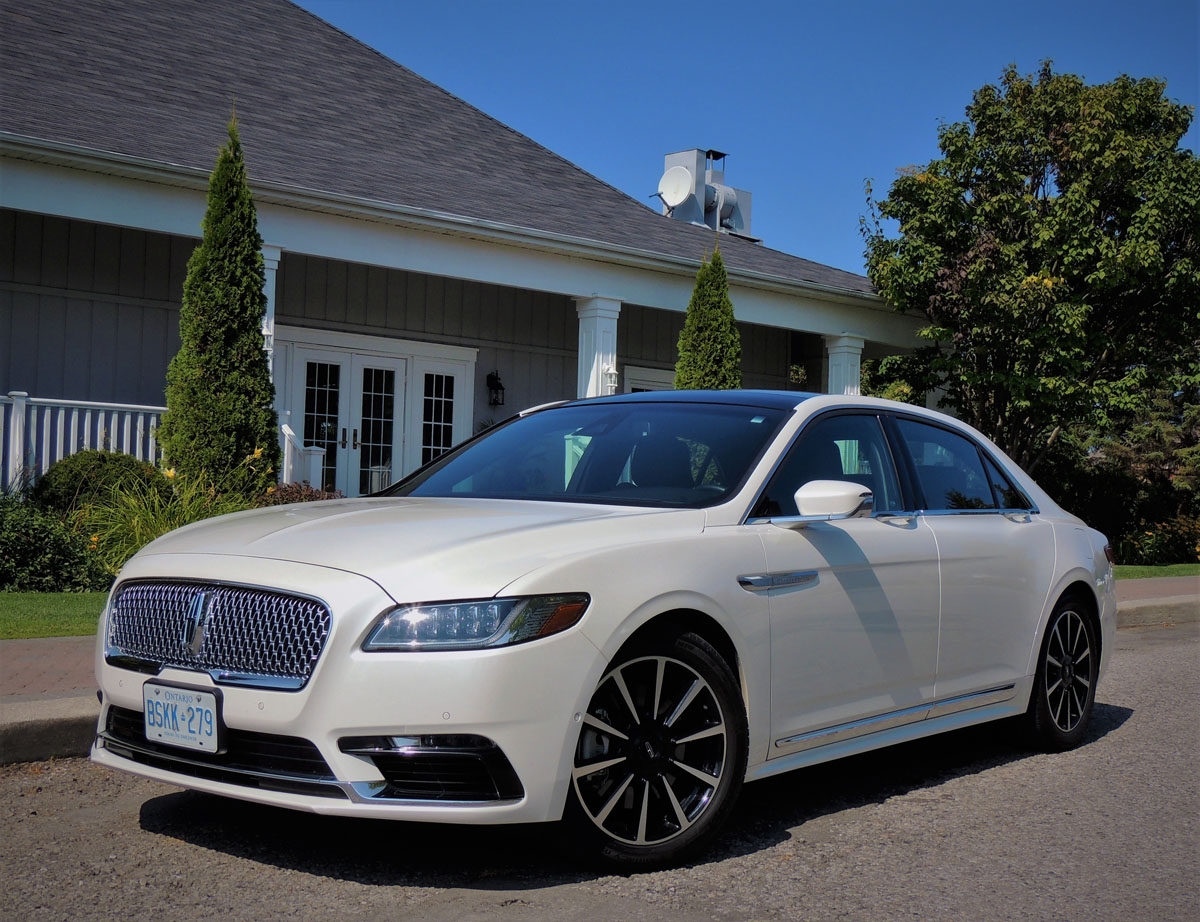
Urban hauler shines in the ‘wilds’ of Algonquin Park
Last week’s family vacay to Killarney Lodge in Algonquin Park was the perfect test for Volvo’s new XC40 compact SUV. Not because we were venturing deep into this 125-year-old protected wilderness – and needed bushwacking prowess. Heck, soft roaders such as these are not meant to take a pounding.
It was, however, the ideal proving ground for hauling three days of luggage, along with a couple of sometimes-cranky kids, on a 520-km round trip hopefully free from drama or discomfort.
On that note the XC40 begins with all the right stuff. Cargo space behind the rear seats, although not cavernous, was enough to pile in four suitcases, a cooler bag, and a few odds and ends, without having to ditch the privacy cover.
The latter item, by the way, is easily stored beneath the cargo floor when not in use. I trust other automakers will take note, as this feature should be a no-brainer.

The rear hatch also includes a folding cargo divider, which although not needed this trip, is ideal for securing smaller loads – like grocery bags – to prevent fruits, veggies and soup cans from rolling around. There’s also a pair of buttons to individually drop the 60/40 rear seats, and a pass-through for longer objects.
Rear passenger space is generous – a relief to those of us with lanky teenagers. After all, there’s nothing more annoying on a long drive than a pair of knees jammed into your seatback.
On that note, the front buckets on my mid-trim R-Design tester provided long-haul comfort. Power adjustability, which includes lumbar for both seats and a cushion extender for the driver, left neither my wife or me squirming after several hours on the road. This is hard to gauge on a typical test drive, when you’re only taking a spin around the block.
You’ve heard the expression “Life is a journey, not a destination.” Ralph Waldo Emerson had never made the summer trek through Ontario cottage country. The endless stream of motorists who can’t keep a steady pace are a treat, but still no match for Volvo’s radar cruise control. It reliably accelerates and brakes to maintain a preset distance to the car in front, removing some of the mental exhaustion that accompanies these long stop-and-go stretches.
This feature is part of Volvo’s semi-autonomous Pilot Assist, which will also help steer the car to keep it inside lane markings. But there’s a catch. Your hands must be on the wheel, and you’re still responsible if things go south. Reasons enough to look after my own steering – even with Volvo managing the throttle and brakes.
Long distances (and short trips) are more bearable inside a quiet and comfortable cabin, and here the XC40 shines. Road and wind noise are minimal, thanks to abundant sound deadening and a slippery shape – no more boxy Volvos – and sounds from the engine are well suppressed.
On that note, the 2.0-litre turbo (248 hp, 258 lb/ft of torque) does come to life when needed. Pull out to pass, and there’s no shortage of pep, with peak torque starting from a low 1,800 rpm.
 Turbo lag is brief, and according to Volvo, zero to 100 km/h takes just 6.1 seconds. I think most of us have accepted the disappearance of V6s in this segment, and with today’s four-pot engines doing such a good job, the extra two cylinders aren’t missed.
Turbo lag is brief, and according to Volvo, zero to 100 km/h takes just 6.1 seconds. I think most of us have accepted the disappearance of V6s in this segment, and with today’s four-pot engines doing such a good job, the extra two cylinders aren’t missed.
Volvo’s 2.0 litre turbo is the only option in Canada, and it’s mated to an eight-speed automatic, with drive to all four wheels.
Five drive modes are also part of the package: Eco, Comfort, Off Road, Dynamic and Individual, allowing some finessing of the experience. I kept it in Comfort most of the time, but found that Dynamic was more satisfying in terms of later shifts, firmer steering, and quicker throttle response.
If, by some chance, none of the above suit your driving style, you can opt for individual settings, which are a challenge to locate on the tablet-style touchscreen. Tap the non-descript ‘double bars’ on top, go to Settings/My Car/Individual Drive Mode. From here, you can set powertrain and brake characteristics, as well as steering force, not to mention whether or not you want Eco climate settings (reduced) or to enable or disable automatic start/stop.
Whew!
Fuel economy is rated at 10.3/7.5/9.0 L/100km (city/hwy/combined), but I fell a little short, averaging 9.8 litres, mostly on the highway. Blame that on my reluctance to annoy other drivers with glacial acceleration and uber early braking to save a few drops of petrol.
With the automaker’s reputation for safety, you’d expect a full suite of driver aids on the XC40. I won’t recite the full list, but will note that all XC40s are equipped with City Safety, which recognizes other vehicles, pedestrians, large animals, and cyclists – and warns you of a likely collision. If you’re slow to react, it brakes automatically.
It came to mind that I may encounter one of Algonquin’s 1,000-pound-plus resident moose – which are even more plentiful in Sweden. Kudos to Volvo for including this as part of the standard package.
 The XC40 starts at $39,900 for the base ‘Momentum,’ with the R-Design (as tested) starting at $44,100 – plus options, and the top-trim Inscription at $46,600.
The XC40 starts at $39,900 for the base ‘Momentum,’ with the R-Design (as tested) starting at $44,100 – plus options, and the top-trim Inscription at $46,600.
Of course, mine was amped up with a load of extras like the $1,800 Vision Package, which includes folding side mirrors (good for letting you know, at a distance, the vehicle is locked), blind spot information and cross traffic alert, and surround view camera.
The last two items are particularly useful in a vehicle with massive C-pillars and mediocre rear visibility. The LEDs on the side mirrors warn you of vehicles in your blind spot, and the ‘bird’s eye’ view from the 360-degree camera was ideal for backing up a narrow cottage driveway. No scratches from the adjacent foliage.
Also part of the package is a self-park feature that can be useful for parallel parking. I still find it takes more effort than the time it saves.
My tester was also equipped with the $1,600 Convenience Package. I like the power tailgate that opens with a wave of the foot (great when your hands are full), the previously-mentioned power folding rear seats, and the wireless smart phone charging.
There’s a tendency among manufacturers to make these kinds of vehicles more car-like with each generation. Like a lifted hatchback. The XC40 still looks more like an SUV, with its robust shoulders and protruding wheel arches pushed to the corners.
Standard wheels are either 18- or 19-inch, but mine rolled on optional 20-inch alloys, and with its tall stance offered a commanding view of the road. Despite all that, the vehicle handles well – with minimal body roll – finding the right balance between corner carving (not a priority) and a forgiving ride.
There are less expensive compacts than the XC40, but among its European rivals – the Audi Q3, Mercedes GLC and BMW X1 – it is well positioned and priced. And worth a test drive if, like many Canadians, you’ve discovered that these vehicles are the right fit for your urban ‘wilderness’ adventures.
SNAPSHOT: 2019 Volvo XC40
BODY STYLE: compact SUV
ENGINE: 2.0-litre inline four cylinder with turbocharger (248 hp, 258 lb/ft of torque)
TRANSMISSION: 8-speed automatic, electronically-controlled AWD
FUEL ECONOMY: 10.3/7.5/9.0 L/100km (city/hwy/comb)
CARGO: 479 litres to rear headrests
PRICING: Momentum $39,900, R-Design $44,100, Inscription $46,600. For pricing on additional packages and options visit website. Freight and taxes extra.
WEBSITE: volvocars.com









